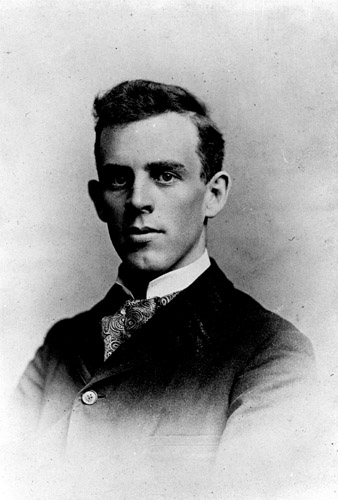<Back to Index>
- Botanist David Grandison Fairchild, 1869
- Poet William Wordsworth, 1770
- Chancellor of Germany Kurt von Schleicher, 1882
PAGE SPONSOR

David Grandison Fairchild (April 7, 1869 - August 6, 1954) was an American botanist and plant explorer. Fairchild was responsible for the introduction of more than 200,000 exotic plants and varieties of established crops into the United States, including soybeans, pistachios, mangos, nectarines, dates, bamboos, and flowering cherries. Certain varieties of wheat, cotton, and rice became especially economically important.
Fairchild was born in Lansing, Michigan, and was raised in Manhattan, Kansas. He was a member of the Fairchild family, descendants of Thomas Fairchild of Stratford, Connecticut. He graduated from Kansas State College of Agriculture (B.A. 1888, M.S. 1889) where his father, George Fairchild, was president. He continued his studies at Iowa State and at Rutgers with his uncle, Byron Halsted, a noted biologist. He received an honorary D.Sc. degree from Oberlin College in 1915.
Barbour Lathrop, a wealthy world traveler, persuaded Fairchild to become a plant explorer for the US Department of Agriculture. Lathrop and another wealthy patron, Allison Armor, financed some of Fairchild's many explorations for new plants to be introduced into the U.S. Fairchild was the author of a number of popular books on his plant collecting expeditions. Of those early travels, Fairchild wrote, "I am glad that I saw a few of the quiet places of the world before the coming of automobiles ...".
In 1905, Fairchild married Marian, younger daughter of Alexander Graham Bell. For many years he managed the Department of Plant Introduction program of the U.S. Department of Agriculture in Washington, D.C., where among other accomplishments, he brought the cherry trees from Japan to Washington. Fairchild was a member of the board of trustees of the National Geographic Society and an officer in what is now called the Alexander Graham Bell Association for the Deaf and Hard of Hearing.
In 1926, the Fairchilds built a home on an 8-acre (32,000 m2) parcel on Biscayne Bay in Coconut Grove, Florida. They named it "The Kampong", after similar family compounds in Java, Indonesia, where Fairchild had spent so many happy days collecting plants. He covered this property with an extraordinary collection of rare tropical trees and plants and eventually wrote a book about the place, entitled "The World Grows Round my Door". In 1986, The Kampong became part of the National Tropical Botanical Garden. In 1938, he was honored by having the Fairchild Tropical Botanic Garden in Coral Gables named after him.
Fairchild was a member of the board of regents of the University of Miami from 1929 to 1933. For three of those years he was chairman of the board.
His son, Alexander Graham Bell Fairchild lived and worked as a research entomologist for 33 years at the Gorgas Memorial Laboratory in the Republic of Panama. A daughter, Nancy Bell, married another entomologist, Marston Bates, author of many books on natural history. She herself wrote a book about living in rural Colombia during the 1940s: "East of the Andes and West of Nowhere". Fairchild
wrote four books that describe his extensive world travels and
activities in introducing new plant species to the United States. In
addition to sharing some of his legendary tropical botanical expertise,
Fairchild provided graphic accounts of long-gone native cultures he was
able to see before being "modernized". Fairchild was an accomplished
photographer and illustrated these books himself. Those books include: The World Was my Garden: Travels of a Plant Explorer (1938), Garden Islands of the Great East: Collecting Seeds from the Philippines and Netherlands India in the Junk 'Chêng ho (1943), The World Grows Round My Door; The Story of The Kampong, a Home on The Edge of the Tropics (1947), Exploring for Plants (1930). In addition Fairchild and his wife, Marian, wrote an early work on macro photography of insects titled Book of Monsters (1914). Fairchild also wrote many
monographs about plants, plant exploring, and the transportation and
cultivation of new plants in the United States.